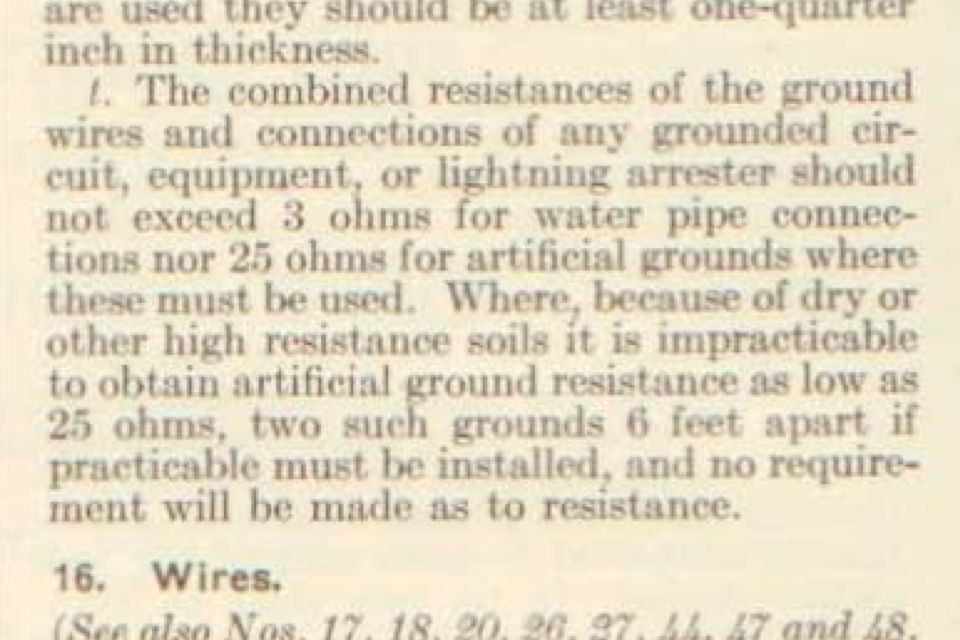140412-2445 EDT
dereckbc:
No way did Edison depend upon earth as one of his conductors. Just consider the impossibility of adding 25 ohms in series with his system load. His 1879 generators (dynamos) were about 5 kW capacity at about 110 V. A 25 ohm load at 110 V is 4.4 A, or a power of 484 W. That is about 1/10 the capability of the generator.
Edison fully realized that to build a useful electrical distribution system that it was necessary to make the internal resistance of the generator and the distribution system low enough that the loads on the system could be randomly turned on and off without a large voltage change at the load. For the Pearl Street Station this would mean very large conductors. In fact the three wire distribution system (the creation of a neutral conductor) was invented to reduce the amount of copper used.
http://en.wikipedia.org/wiki/Pearl_Street_Station 175 HP input with electrical output of possibly 100 kW. Started as one generator.
http://www.coned.com/history/electricity.asp Confirms the 100 kW figure.
110 V at 100 kW is 909 A, and we can expect the total source resistance at possibly less than 1/10 this load, but not one cable. Rsource = about 110/(10*1000) = 0.011 ohms for the total loop. Nothing close to 25 ohms.
.


